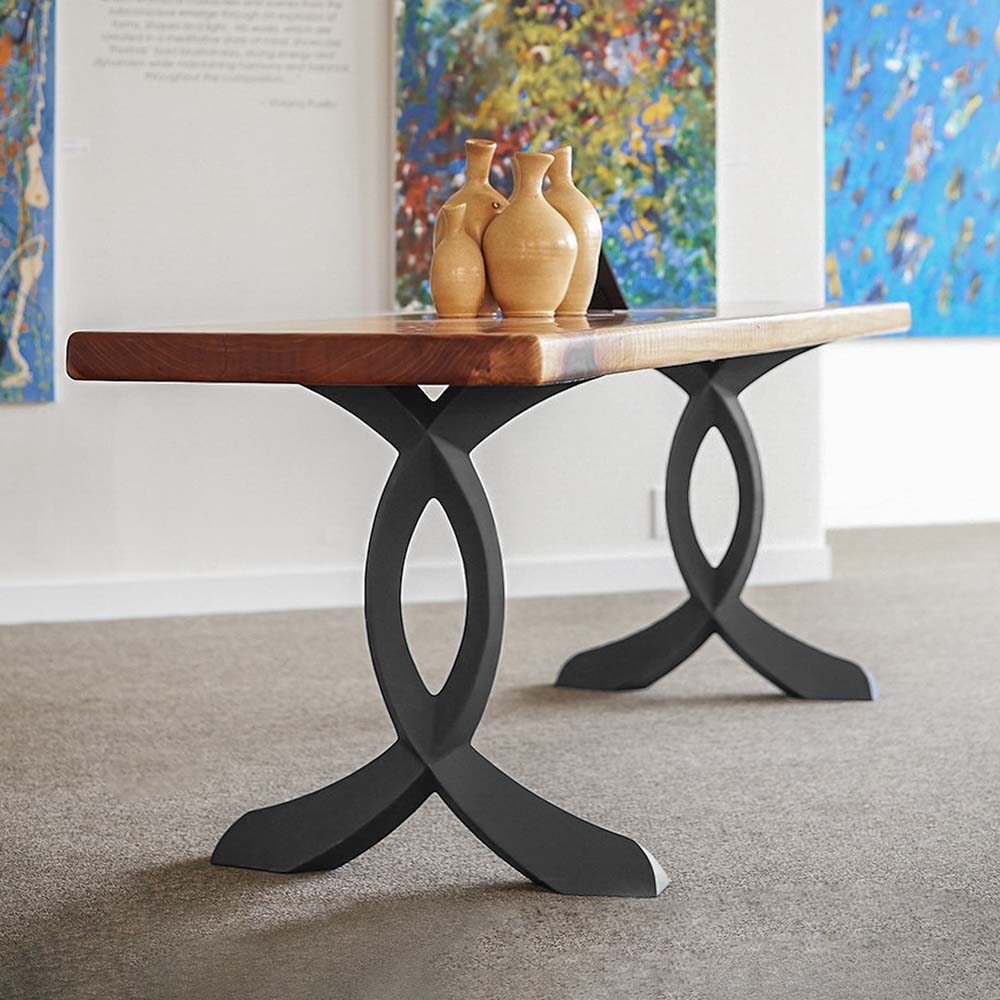Discover the Best Products for Dining Room Table Legs for every single Design
Discover the Best Products for Dining Room Table Legs for every single Design
Blog Article
A Detailed Check Out Table Leg Styles: Locating the Suitable Match
Picking the best dining table leg style is critical for both aesthetic appeal and practical performance. For those with bigger tables, trestle legs ensure sturdy assistance, whereas barrette legs introduce a mid-century contemporary vibe with their minimal layout. The x-shaped legs mix contemporary design with boosted stability.
Standard Four Legs
Amongst the numerous types of dining table leg styles, the typical four-leg layout remains a timeless choice for several households. This timeless setup uses a harmonious blend of capability and visual appeals, making it a seasonal favorite. 4 legs provide balanced support, making certain the table continues to be secure and capable of bearing substantial weight. This is specifically beneficial for homes that often host big gatherings or use their table for multiple objectives, such as job or crafting.
From an aesthetic point of view, the typical four-leg design can be easily adapted to numerous indoor designs. Whether crafted from timber, steel, or a mix of products, these legs can be intricately sculpted, streamlined and minimalistic, or anything in between. Their adaptability enables them to enhance both rustic and contemporary settings perfectly.
In addition, the simple structure of the four-leg style helps with simplicity of movement and placement within a room. Unlike more facility bases, this design decreases obstructions, offering sufficient legroom for diners. In recap, the conventional four-leg dining table leg design weds withstanding sophistication with functional capability, making it a sharp option for those looking for both form and feature in their eating furnishings.
Pedestal Base
Usually commemorated for its stylish and space-efficient layout, the stand base is a recognized option to the standard four-leg setup in dining table leg styles. Without corner legs, diners are managed better freedom of activity, making it a suitable option for round and oblong tables that promote more intimate and comprehensive events.
Moreover, the pedestal base's main support can deal with considerable weight, enabling for the usage of heavier table tops, such as marble or thick hardwood. This strength paired with its aesthetic adaptability makes the stand base a preferred option in both conventional and modern interior settings. It can perfectly incorporate with numerous style themes, from traditional sophistication to minimal modernity. Moreover, the central column itself offers a canvas for elaborate designs and artistic expressions, adding an element of aesthetic rate of interest below the table. In summary, the pedestal base combines performance snappy, making it an improved and functional alternative for diverse eating atmospheres.
Trestle Legs
Trestle legs supply a durable and classic structure for dining tables, defined by their straight cross-bracing and sturdy support light beams. Originating from medieval times, this design has advanced yet maintained its important framework, making it a seasonal favorite in both typical and contemporary setups. The main trestle light beam, typically sustained by 2 or even more upright articles, provides phenomenal stability, permitting larger table sizes without the demand for additional legs.
A significant benefit of trestle leg tables is the sufficient legroom they supply. Unlike tables with 4 corner legs, the lack of blockages at the table's edges supplies unblocked room for chairs and restaurants, improving convenience and availability. This makes trestle tables excellent for suiting bigger celebrations, whether in an eating room or a banquet hall.
From rustic farmhouse to streamlined modern-day styles, trestle legs can be tailored to suit individual tastes. Their enduring allure and functional benefits make trestle legs a compelling option for those looking for both design and functionality in their dining table.
Barrette Legs

The allure of hairpin legs exists in their simplicity and convenience - dining room table legs. Offered in a variety of products, consisting of steel and brass, they can be ended up in many shades to match different interior styles. Whether coupled with a rustic wooden tabletop or a contemporary glass surface, barrette legs easily mix performance with a touch of vintage charm
Sturdiness is one more notable feature of hairpin legs. Regardless of their delicate look, these legs are crafted to birth considerable weight, ensuring the table stays stable and safe. Additionally, they are reasonably very easy to set up, making them a prominent selection for do it yourself fanatics and professional furnishings manufacturers alike.
X-Shaped Legs

Constructed from materials such as steel, timber, or a mix of both, X-shaped legs can be tailored to match various layout choices. Steel legs frequently lend a streamlined and commercial feeling, ideal for loft-style homes and modern-day eating areas. On the various other hand, wood X-shaped legs use a warmer, a Full Report lot more rustic appeal, suitable for farmhouse or eclectic insides. The versatility in materials permits home owners to personalize their table to better fit their total layout scheme.
In addition, the design behind X-shaped legs makes sure also weight distribution, decreasing the danger of wobbling and boosting resilience. This makes them particularly well-suited for larger table that call for added support. In essence, X-shaped legs blend functional engineering with modern-day looks, making them a classic choice for diverse dining settings.
Verdict
A comprehensive understanding of dining table leg styles discloses the distinctive characteristics and advantages of each design. Trestle legs make sure robust assistance for bigger tables, and barrette legs present a mid-century contemporary aesthetic.
Report this page